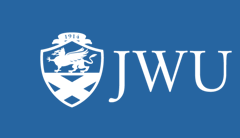Document Type
Article
Abstract
A mixed methods convergent evaluation informed the redesign of an innovative public school that uses an accelerated model to serve grades 7-9 students who have been retained in grade level and are at risk for dropping out of school. After over 25 years in operation, a shift of practices/policies away from grade retention and toward social promotion required the school to adapt their model to best served students with high risk factors for dropping out of school who have been socially promoted, rather than retained in grade level. This study provided the qualitative (perspectives of former students (N = 8) and quantitative (demographic and outcome variables for students (N = 164) who completed the program between 2007-2009) data to ground the evolution of the school model. Five critical aspects of the school model emerged from the former students: teacher as warm demander, diverse and creative practices, being one community, student self-efficacy, and upholding diversity and equity. Quantitative analyses revealed the key finding that the number of times a student accelerated to the next grade in their courses was a positive predictor of all the high school outcomes studied. Data mixed during interpretation generated recommendations to continue strong practices and strengthen the following: have students set, monitor, and share progress; increase clear and high expectations; engage the adult community in setting, tracking and assessing goals; and increase culturally competent practices. These findings can also be used by schools serving students who may be at risk for dropping out of school.
Creative Commons License

This work is licensed under a Creative Commons Attribution 4.0 International License.
DOI
https://doi.org/10.5296/jei.v2i2.10290
Repository Citation
Braun, Donna; Gable, Robert K.; Billups, Felice D.; Vieira, Mary; and Blasczak, Danielle, "Evolving an Accelerated School Model through Student Perceptions and Student Outcome Data" (2016). Education Department Faculty Publications & Research. 3.
https://scholarsarchive.jwu.edu/edu_fac/3
Citation/Publisher Attribution
Braun, D., Gable, R. K., & Billups, F. D. (2016). Evolving an accelerated school model through student perceptions and student outcome data. Journal of Educational Issues, 2(2).

